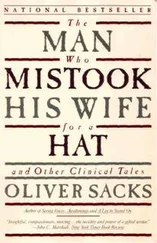After a while the scene started to fade, and I became dimly conscious, once more, that I was in London, stoned, hallucinating Agincourt on the sleeve of my dressing gown. It had been an enchanting and transporting experience, literally so, but now it was over. The drug effect was fading fast; Agincourt was hardly visible now. I glanced at my watch. I had injected the morphine at nine-thirty, and now it was ten. But I had a sense of something odd — it had been dusk when I took the morphine; it should be darker still. But it was not. It was getting lighter, not darker, outside. It was ten o’clock, I realized, but ten in the morning. I had been gazing, motionless, at my Agincourt for more than twelve hours. This shocked and sobered me, and made me realize that one could spend entire days, nights, weeks, even years of one’s life in an opium stupor. I would make sure that my first opium experience was also my last.
At the end of that summer of 1965, I moved to New York to begin a postgraduate fellowship in neuropathology and neurochemistry. December 1965 was a bad time: I was finding New York difficult to adjust to after my years in California, a love affair had gone sour, my research was going badly, and I was discovering for myself that I was not cut out to be a bench scientist. Depressed and insomniac, I was taking ever-increasing amounts of chloral hydrate to get to sleep, and was up to fifteen times the usual dose every night. And though I had managed to stockpile a huge amount of the drug — I raided the chemical supplies in the lab at work — this finally ran out on a bleak Tuesday a little before Christmas, and for the first time in several months I went to bed without my usual knockout dose. My sleep was poor, broken by nightmares and bizarre dreams, and upon waking, I found myself excruciatingly sensitive to sounds. There were always trucks rumbling along the cobblestoned streets of the West Village; now it sounded as if they were crushing the cobblestones to powder as they passed.
Feeling a bit shaky, I did not ride my motorcycle to work as usual, but took a train and bus. Wednesday was brain-cutting day in the neuropathology department, and it was my turn to slice a brain into neat horizontal sections, to identify the main structures as I did so, and to observe whether there were any departures from normal. I was usually pretty good at this, but that day I found my hand trembling visibly, embarrassingly, and the anatomical names were slow in coming to mind.
When the session ended, I went across the road, as I often did, for a cup of coffee and a sandwich. As I was stirring the coffee, it suddenly turned green, then purple. I looked up, startled, and saw that a customer paying his bill at the cash register had a huge proboscidean head, like an elephant seal. Panic seized me; I slammed a five-dollar note on the table and ran across the road to a bus on the other side. But all the passengers on the bus seemed to have smooth white heads like giant eggs, with huge glittering eyes like the faceted compound eyes of insects — their eyes seemed to move in sudden jerks, which increased the feeling of their fearfulness and alienness. I realized that I was hallucinating or experiencing some bizarre perceptual disorder, that I could not stop what was happening in my brain, and that I had to maintain at least an external control and not panic or scream or become catatonic, faced by the bug-eyed monsters around me. The best way of doing this, I found, was to write, to describe the hallucination in clear, almost clinical detail, and, in so doing, become an observer, even an explorer, not a helpless victim of the craziness inside me. I am never without pen and notebook, and now I wrote for dear life, as wave after wave of hallucination rolled over me.
Description, writing, had always been my best way of dealing with complex or frightening situations — though it had never been tested in so terrifying a situation. But it worked; by describing what was going on in my lab notebook, I managed to maintain a semblance of control, though the hallucinations continued, mutating all the while.
I managed somehow to get off at the right bus stop and onto the train, even though everything was now in motion, whirling vertiginously, tilting and even turning upside down. And I managed to get off at the right station, in my neighborhood in Greenwich Village. As I emerged from the subway, the buildings around me were tossing and flapping from side to side, like flags blowing in a high wind. I was enormously relieved to make it back to my apartment without being attacked, or arrested, or killed by the rushing traffic on the way. As soon as I got inside, I felt I had to contact somebody — someone who knew me well, who was both a doctor and a friend. Carol Burnett was the person: we had interned together in San Francisco five years earlier and had resumed a close friendship now that we were both in New York City. Carol would understand; she would know what to do. I dialed her number with a grossly tremulous hand. “Carol,” I said, as soon as she picked up, “I want to say good-bye. I’ve gone mad, psychotic, insane. It started this morning, and it’s getting worse all the while.”
“Oliver!” Carol said. “What have you just taken?”
“Nothing,” I replied. “That’s why I’m so frightened.” Carol thought for a moment, then asked, “What have you just stopped taking?”
“That’s it!” I said. “I was taking a huge amount of chloral hydrate and ran out of it last night.”
“Oliver, you chump! You always overdo things,” Carol said. “You’ve got a classic case of the DT’s, delirium tremens.”
This was an immense relief — much better DT’s than a schizophrenic psychosis. But I was quite aware of the dangers of the DT’s: confusion, disorientation, hallucination, delusion, dehydration, fever, rapid heartbeat, exhaustion, seizures, death. I would have advised anyone else in my state to get to an emergency room immediately, but for myself, I wanted to tough it out, and experience it to the full. Carol agreed to sit with me for the first day; then, if she thought I was safe by myself, she would look by or phone me at intervals, calling in outside help if she judged it necessary. Given this safety net, I lost much of my anxiety, and could even enjoy the phantasms of delirium tremens in a way (though the myriads of small animals and insects were anything but pleasant). The hallucinations continued for almost ninety-six hours, and when they finally stopped, I fell into an exhausted stupor. 37 37 Many years later, I experienced the much gentler effects of sakau, the intoxicating sap of a pepper ( Piper methysticum , also called kava in Polynesia) cultivated in the South Pacific. Drinking sakau has been a central part of Micronesian life, as chewing coca leaves has been in the Andes, for thousands of years; and its use is formalized in elaborate sakau rituals. I described the effects of sakau at length in The Island of the Colorblind; it may evoke a delicious sense of floating and ease, as well as a variety of visual illusions or hallucinations.
As a boy, I had known extreme delight in the study of chemistry and the setting up of my own chemistry lab. This delight seemed to desert me at the age of fifteen or so; in my years at school, university, medical school, and then internship and residency, I kept my head above water, but the subjects I studied never excited me in the same intense way as chemistry had when I was a boy. It was not until I arrived in New York and began seeing patients in a migraine clinic in the summer of 1966 that I began to feel a little stirring of the intellectual excitement and emotional engagement I had known in my earlier years. It was in the hope of stirring up these intellectual and emotional excitements even further that I turned to amphetamines.
Читать дальше












